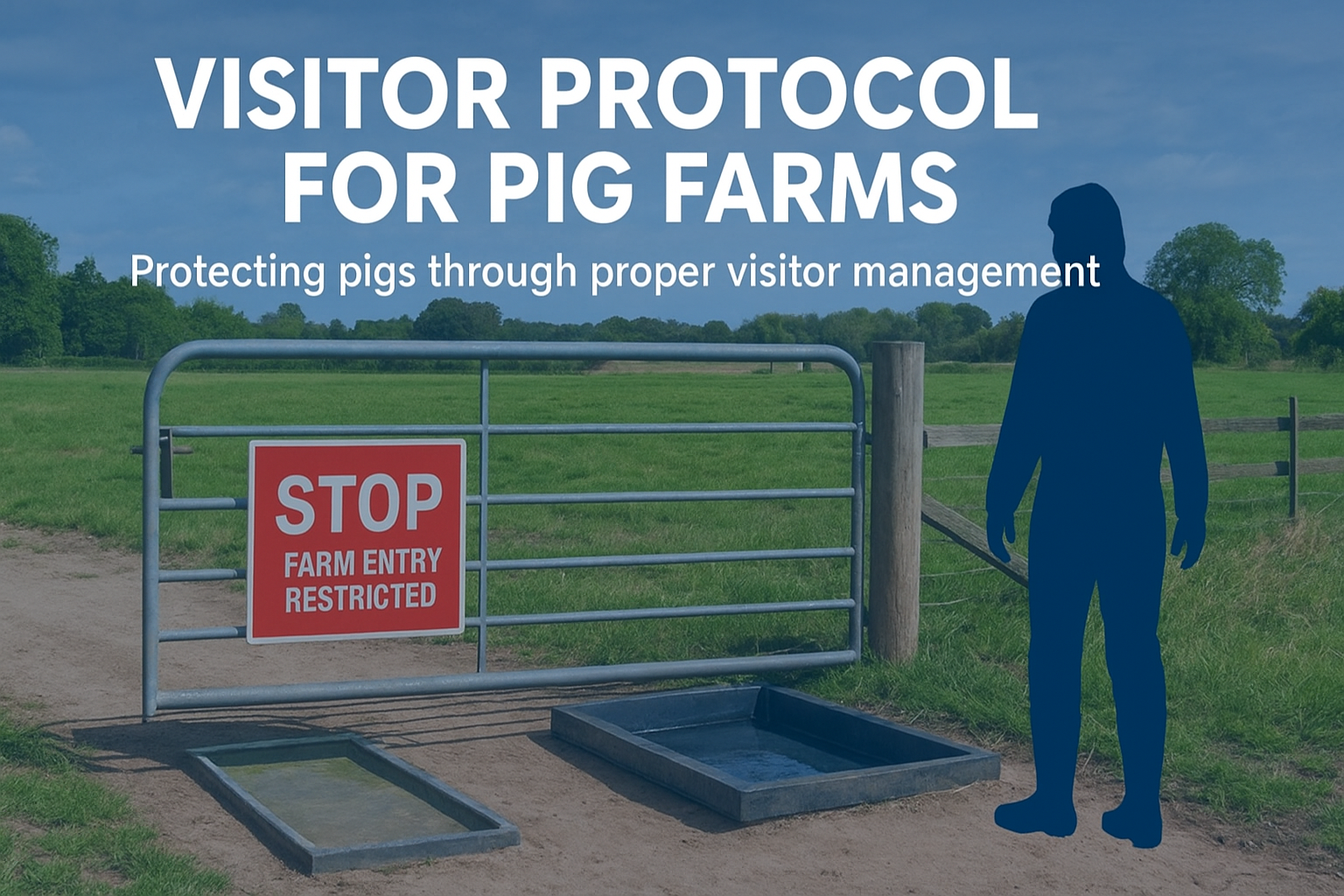Biosecurity is one of the most important aspects of modern pig farming. While farmers often focus on animal care, housing, and feed management, visitors can also be a major source of disease transmission. Proper visitor protocols help reduce risks and protect both animals and farm productivity.
Why Visitor Protocol Matters
Visitors—whether veterinarians, feed suppliers, technicians, or family members—can unintentionally carry pathogens on their shoes, clothes, or equipment. Strict guidelines minimize the risk of spreading diseases like African Swine Fever (ASF), Porcine Epidemic Diarrhea (PED), or Foot-and-Mouth Disease (FMD).
Best Practices for Visitor Management
- Restrict Farm Entry
- Limit farm access to essential visitors only.
- Maintain a visitor logbook with names, purpose of visit, and last farm visited.
- Biosecurity Checkpoint
- Provide a designated entry point with handwashing stations and footbaths.
- Ensure visitors use disinfectants before entering animal areas.
- Protective Clothing
- Supply farm-only boots, coveralls, and hairnets for all visitors.
- Wash and disinfect clothing after every use.
- Quarantine Policy for Visitors
- Require visitors who recently visited another pig farm to observe a minimum downtime (24–72 hours) before entering.
- Limit Contact with Animals
- Only allow essential personnel near pigs.
- Visitors should avoid direct animal contact unless necessary.
Conclusion
Strong visitor protocols serve as the first line of defense in keeping pig farms safe. By controlling access, ensuring sanitation, and enforcing downtime policies, farmers can greatly reduce the chance of introducing diseases into their herd.

